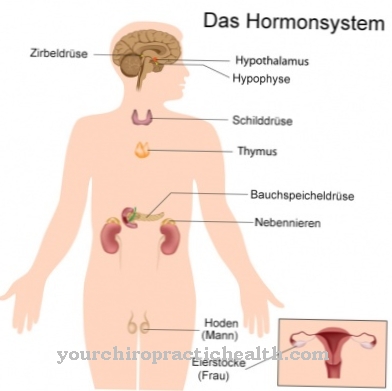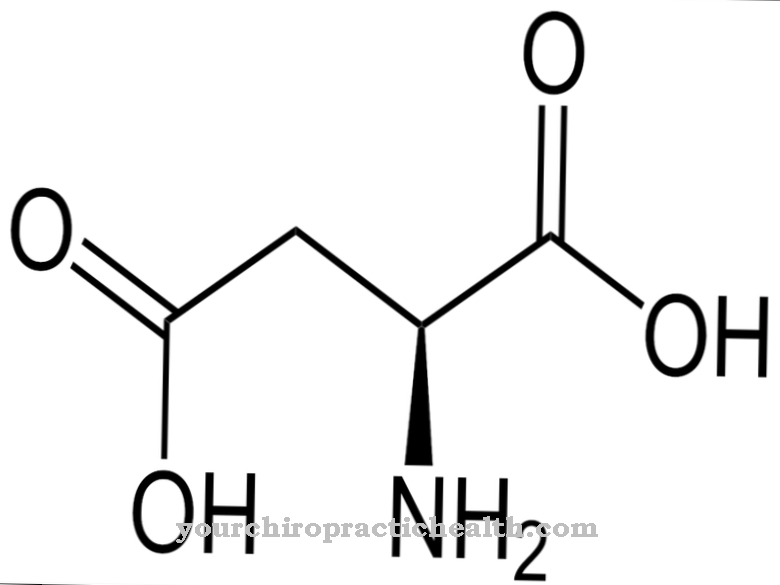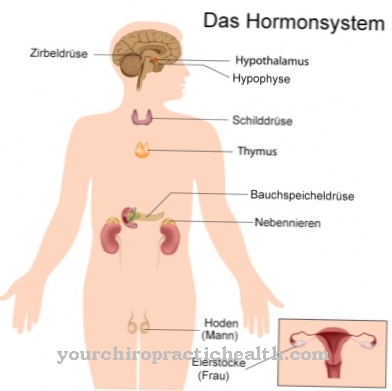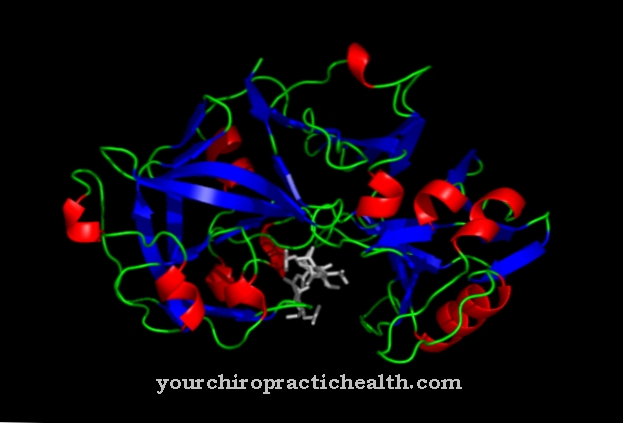Uracil is a nucleic base that forms a base pair with adenine in the RNA and forms the counterpart to the similarly structured thymine in the DNA.
Uracil is an aromatic, heterocyclic compound with a six-membered ring consisting of a modified pyrimidine skeleton. In RNA, uracil is present in the form of uridine, i.e. as a nucleoside that is linked to a ribose molecule via an n-glycosidic bond and, like thymine, forms two hydrogen bonds with the complementary base adenine.
What is uracil
Uracil is one of four nucleobases that make up the RNA strands of the genome. Uracil replaces the similarly composed nucleobase thymine of DNA.
Uracil is a heterocyclic, aromatic compound with a modified six-membered pyrimidine ring as its basic structure. In the RNA, uracil is present as a nucleoside, called uridine. Uridine - like thymidine in DNA - forms two hydrogen bonds with the complementary base adenine. The chemical formula C4H4N2O2 shows that uridine consists exclusively of carbon, hydrogen, nitrogen and oxygen. No rare minerals or trace elements are required for biosynthesis.
As with the other nucleobases that make up the genetic material, the body is able to synthesize uracil, but prefers to obtain uracil from recycling processes and from the breakdown of certain proteins called uracil in its pure form or contained in the nucleosidic form as uridine or even in the phosphorylated form of uridine. Uridine can be phosphorylated with one to three phosphate groups to form uridine mono- (UMP), uridine di (UDP) or uridine triphosphate (UTP). In the body, uridine occurs mainly as a component of RNA or in the phosphorylated form of uridine.
Function, effect & tasks
The main function of uracil is to occupy its respective position at the intended locations in the base strands of the RNA and to connect to the complementary nucleobase adenine via a double hydrogen bond during the transcription or translation phase.
This is one of several prerequisites for the corresponding RNA base strand to be properly coded and, after the complementary copy by so-called messenger RNA (mRNA), leads to the synthesis of the genetically intended proteins with regard to the selection and sequence of the amino acids. Proteins consist of a string of certain proteinogenic amino acids that are linked to one another via peptide bonds. Structurally, these are polypeptides, which are called proteins or protein from a number of 100 or more involved amino acids.
In fact, this means that the main task of uracil or uridine - like that of the other nucleobases - is in a passive role. Uracil is not actively involved in biochemical conversion processes. A possible role of uridine or of uridine phosphorylated with one to three phosphate groups as a component of enzymes or hormones is not known.
Education, occurrence, properties & optimal values
In principle, the body is able to synthesize uracil itself. No rare basic substances are required. However, the synthesis is complex and requires a lot of energy, so that the body prefers to obtain uracil and uridine by means of catalysis, via the breakdown and remodeling of other substances that contain a pyrimidine skeleton.
This special way of obtaining uracil, which the body also prefers for the bioactive production of the other nucleic acids, is called the Salvage Pathway. The term can be freely translated as recycling and recovery. Since the basic structure of uracil consists of a heterocyclic six-membered ring, six different tautomers are possible, which differ in the arrangement of the molecules or groups of molecules on the six-membered ring. In the dioxo form with two oxygen atoms without an OH group, uracil forms a white powder that only melts at a temperature of 341 degrees Celsius. The importance of the individual tautomers in metabolism is not known.
The nucleobase does not occur in free form in the body, but only in an integrated, phosphorylated form or as a component of the RNA. An optimal concentration of uracil or uridine or a reference value for the definition of a normal range does not exist. Since uracil consists exclusively of carbon, oxygen and hydrogen, the body can completely break down the compound to carbon dioxide, ammonium ions and oxopropanoic acid and dispose of it without leaving any residue, or use the released groups of molecules to build up other substances.
Diseases & Disorders
One of the main dangers that arise in connection with uracil as an integrated component of RNA lies in incorrectly making copies of the DNA or RNA strands, which in the subsequent steps leads to incorrect synthesis of the intended proteins.
Incorrect repetition sequences of certain nucleic acid triplets, omissions or other errors result in unintended amino acids and / or amino acids in the wrong sequence being strung together via peptide bonds. If the body cannot fix the fault with its own repair options, then biochemically inactive proteins or unstable compounds are created that are broken down and metabolized again by the body. However, such errors are not due to active intervention by the nucleobases. Uracil is important as a raw material for a drug combination with tegafur, a cytostatic agent for the treatment of colon cancer.
Uracil supports the effect of the cytostatic agent because it inhibits its breakdown and thus extends the time the cytostatic agent takes effect. In other drug combinations, uracil derivatives such as 5-fluoro-uracil and deoxyuridine are used as inhibitors of folic acid metabolism in advanced colorectal cancer. Cytostatics inhibit the growth and multiplication of cells, but not only the multiplication of certain cancer cells, but also the cells of healthy tissue, so that unwanted side effects pose a challenge when used.





.jpg)



















.jpg)

.jpg)
